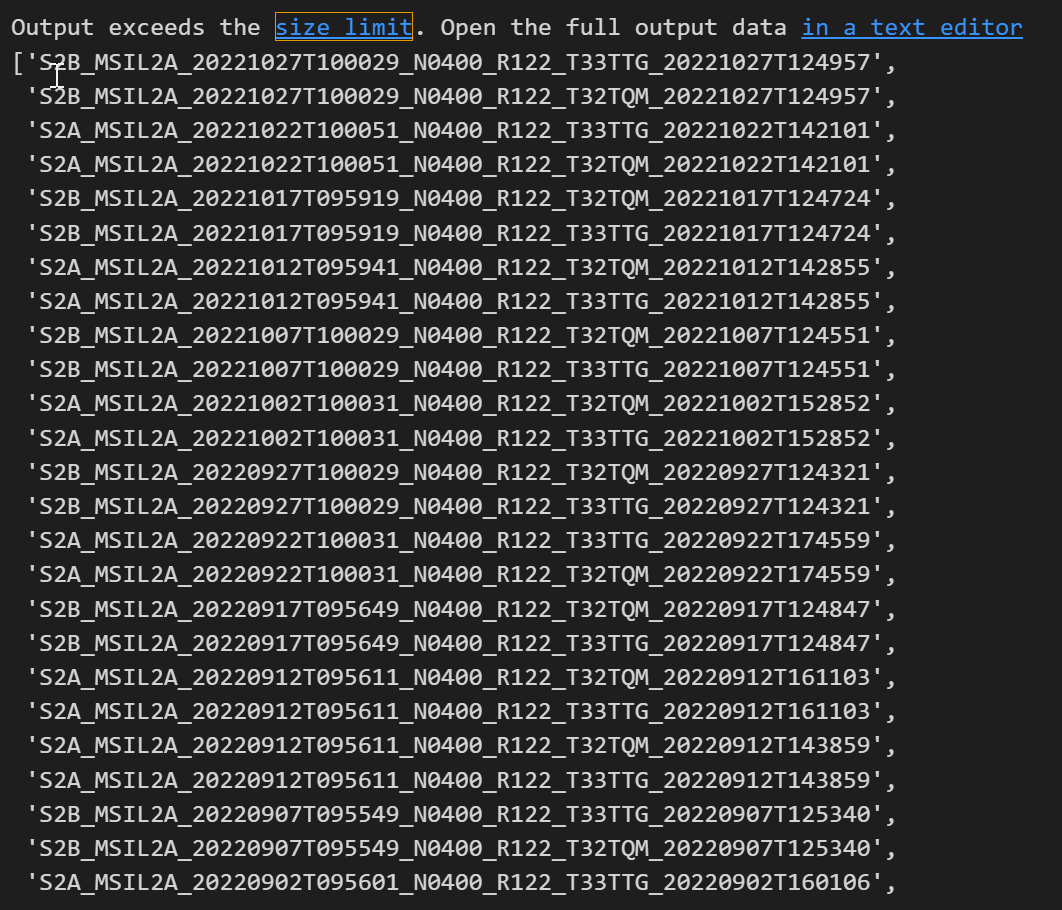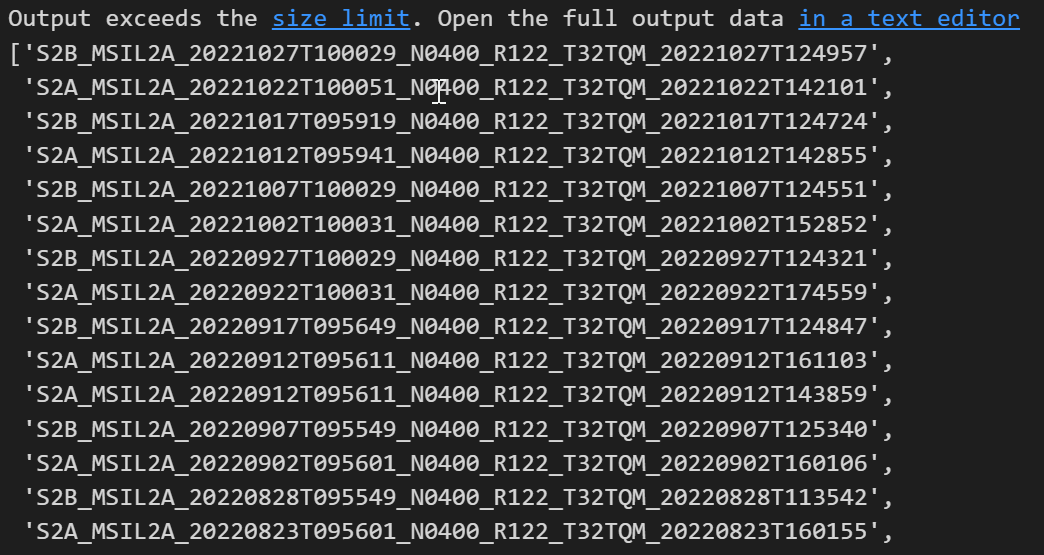I have a brief question regarding the CatalogAPI on Sentinel 2 collections. Is there a way to filter for specific tile ids and orbit numbers? It appears as if only cloud cover is available as a metric, in contrast to e.g. the Sentinel 1 collection.
Best



